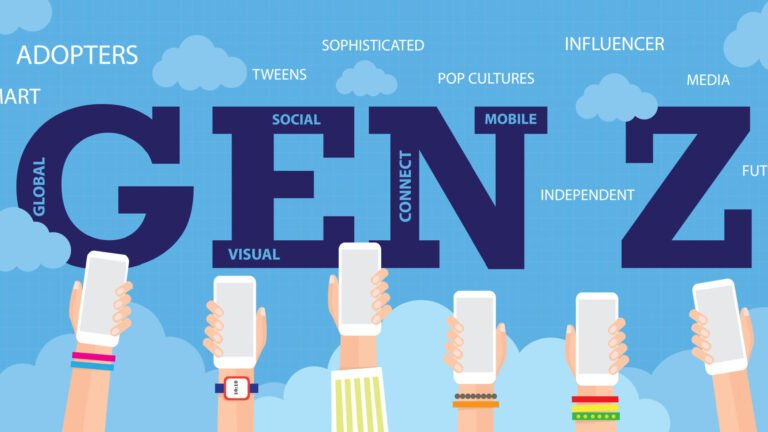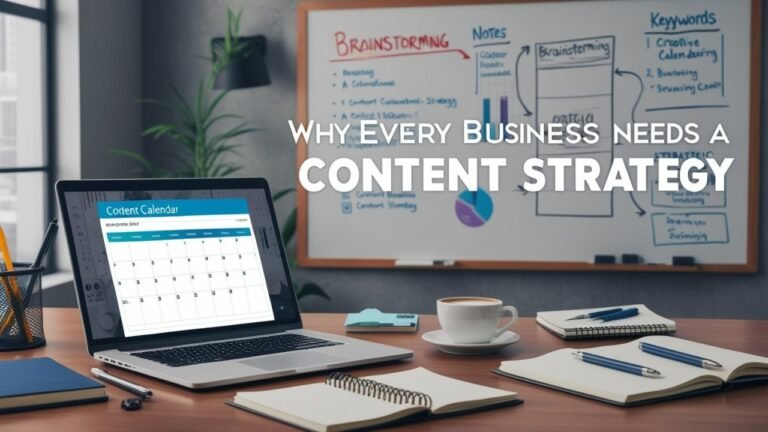Interactive Content: The Ultimate Guide to Engage and Convert Your Audience
Imagine content that doesn’t just tell a story but pulls users right into the action. That’s the magic of interactive content—a blend of innovation and strategy that allows users to explore, participate, and engage deeply. Whether it’s a quiz that offers personalized recommendations or an interactive map highlighting crucial insights, this approach transforms passive scrolling into meaningful interaction.
More than just a trend, interactive content has become an essential part of modern content marketing. It bridges the gap between brands and their audience, delivering valuable insights while making the experience more memorable.
In this guide, we’ll unpack what interactive content is, why it’s a powerful tool for driving engagement, and how to create content that users can’t resist engaging with.

What is Interactive Content?
At its core, interactive content is anything that requires users to engage directly—whether through clicking, scrolling, answering, or exploring. Unlike static content that simply presents information, interactive content responds dynamically to user actions, creating a two-way conversation.

This type of content stands out because it’s designed to:
- Involve users by allowing them to actively participate in the experience.
- Deliver relevant data and insights tailored to individual preferences.
- Create an interactive experience that’s memorable and highly engaging.
Benefits of Interactive Content
Interactive content isn’t just a buzzword—it’s a powerful tool that brings measurable benefits to brands:
- It boosts engagement by immersing users in the content.
- It provides a personalized experience, helping businesses build deeper connections and foster brand loyalty.
- It offers valuable insights by tracking user behavior and preferences, helping refine future strategies.
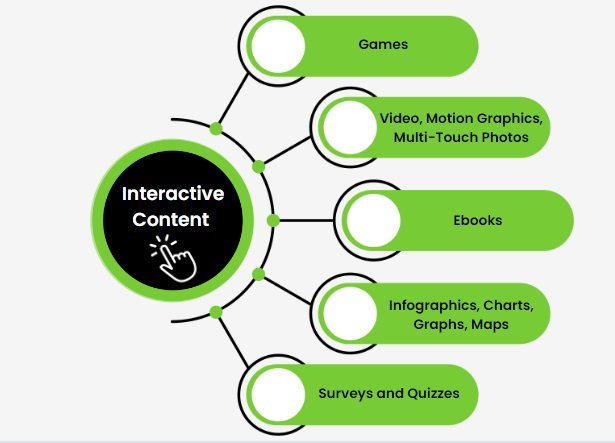
How Interactive Content Differs from Static Content
The difference between interactive and static content is like night and day:
- Interactive components are dynamic, responding to user input, while static content is passive.
- Interactive content helps boost engagement and provides actionable data, whereas static content lacks this level of depth.
- With tools like interactive calculators and maps, interactive content lets users explore topics in ways static content simply can’t.
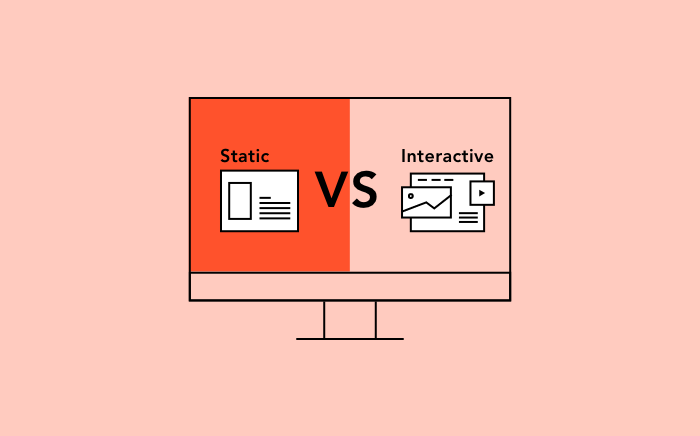
Why Interactive Content Matters
Interactive content is more than just eye-catching—it’s a data goldmine. By encouraging users to participate, you can gather valuable insights about their preferences and behaviors.
- Tools like interactive quizzes or calculators provide a personalized experience while tracking user behavior.
- This helps brands uncover patterns, understand what their audience values, and adapt their marketing strategy accordingly.
- Plus, these insights can be used to nurture leads, guide them through the sales funnel, and close deals effectively.
Conversion Powerhouse
Want to turn prospects into leads and leads into loyal customers? Interactive content is your secret weapon.

- Features like interactive calculators make it easy for users to see the value of your products or services—driving up conversion rates.
- It’s not just about closing sales; it’s also about increasing engagement and leaving a lasting impression.
- From e-commerce to education, the right interactive content can transform casual browsers into active buyers.
Unleashing Creativity
Small businesses, take note: interactive content can give you a competitive edge.
- By combining creativity with interactive elements like video content, animations, or maps, you can craft experiences that resonate with your audience.
- This approach is particularly effective for showcasing your brand’s uniqueness while providing valuable insights about your audience’s preferences.

Creating Interactive Content
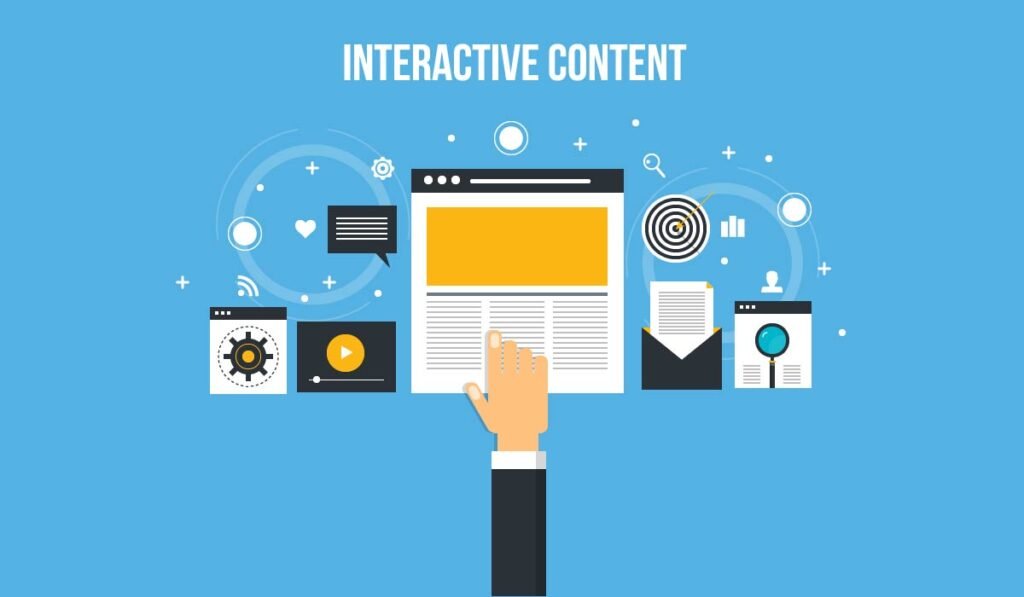
Decide on the Message and Medium
Crafting effective interactive content starts with clarity on what you want to say and how you want to say it.
- Consider how interactive components like maps, quizzes, or animations can enhance your message.
- Think about user behavior and how users might interact with your content on mobile devices or desktops.
- Remember, the medium matters—choose tools and platforms that align with your goals.
Choose the Right Media
Interactive tools provide endless possibilities to captivate your audience.
- Use elements like video content, animated graphs, or interactive infographics to explain complex ideas visually.
- Platforms like Shorthand and ThingLink make it easy to integrate interactive maps, audio, and videos into your design.
- The right media keeps your audience engaged and encourages them to dive deeper into your content.
Design with a Favorite Tool
Design is the backbone of any successful interactive experience.
- Tools like Adobe XD, Figma, or Canva allow you to build visually stunning and user-friendly layouts.
- For presentations or simple interactive stories, platforms like PowerPoint or Google Slides are great starting points.
- Focus on creating quality content that blends functionality and visual appeal.
Add Interactive Elements to Enhance Engagement
Your audience expects something fresh, and interactive elements deliver just that.
- Use tools like Tiled or Outgrow to add innovative features, such as interactive calculators, quizzes, or clickable graphics.
- These features amplify the interactive experience, making your content more immersive.
- Ensure everything is optimized for mobile devices to reach users wherever they are.
Types of Interactive Content
Interactive content comes in many forms, each designed to boost engagement and provide a unique experience for your audience. Let’s explore some of the most popular types:
Interactive Infographics
- These visually appealing tools transform complex data into engaging, interactive visuals.
- By allowing users to explore relevant data through clickable charts or animations, interactive infographics offer a personalized and memorable experience.
- Perfect for presenting reports, statistics, or layered information in an easy-to-digest format.
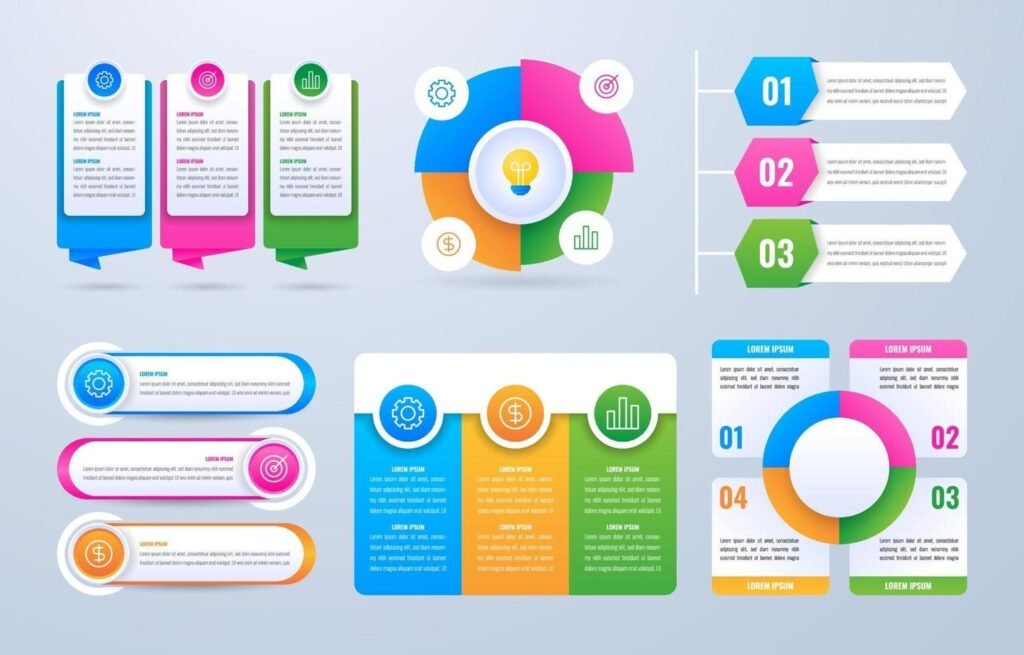
Quizzes
- Quizzes are a fun and effective way to create engaging content while gathering insights about your audience.
- Whether it’s a personality quiz or a knowledge test, this format encourages users to actively participate, keeping them invested in your content.
- Bonus: quizzes often lead to valuable insights that can inform your future strategies.

Interactive Calculators
- One of the most effective tools for lead generation, calculators provide tangible value by solving real problems for users.
- Examples include ROI calculators, budgeting tools, or cost estimators that directly address user pain points.
- This powerful tool not only boosts conversions but also builds trust with your audience.
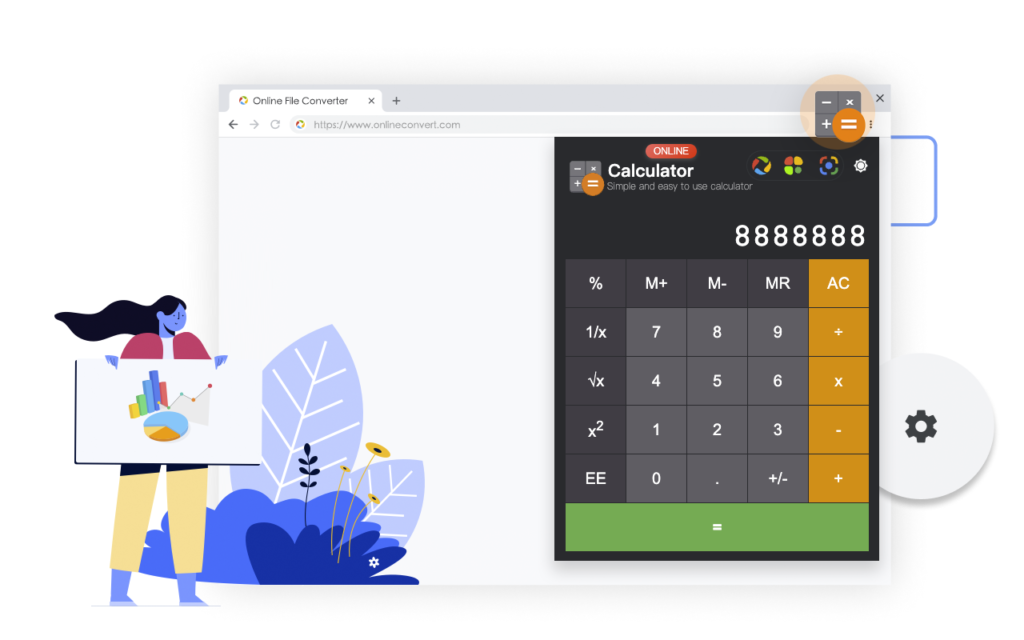
Interactive Maps
- Maps with clickable regions, data overlays, or multimedia features allow users to explore content in a highly engaging way.
- Use cases range from showcasing store locations to visualizing global trends, making interactive maps a versatile tool.
- Platforms like Mapme and Flourish make it easy to add this feature to your content.

Video Content with Interactive Elements
- Videos become even more engaging when you add clickable elements, branching paths, or embedded quizzes.
- Platforms like Stornaway.io and Thinglink enable you to create interactive video content that holds users’ attention longer.
- This format is particularly effective for storytelling or educational purposes.

Other Interactive Tools
- Interactive polls, surveys, and assessments: Great for collecting audience feedback.
- Custom visualizations: Tools like Flourish can turn raw data into stunning interactive charts and graphs.
- Interactive presentations: Perfect for events or webinars to keep audiences engaged.
With so many types of interactive content to choose from, you can tailor your strategy to fit your goals and resonate with your target audience.
Tools for Making Interactive Content
Creating high-quality interactive content doesn’t require a tech wizard. With these powerful and accessible tools, you can craft experiences that keep your audience engaged and provide valuable insights.

ThingLink
- What it does: Enables you to add interactive layers to videos, images, and even 360° media.
- Best for: Creating interactive maps, virtual tours, or educational content.
- Why it stands out: Its in-built editor allows for seamless integration of clickable labels, icons, and links, making it a great tool for marketers and educators.
Apester
- What it does: Offers a drag-and-drop editor to create polls, quizzes, and surveys for websites or social media.
- Best for: Repurposing content for engagement across platforms.
- Why it stands out: Its ease of integration with landing pages and social media feeds ensures your content reaches a broader audience.
Mapme
- What it does: Simplifies the creation of stunning interactive maps.
- Best for: Visualizing geographic data or embedding maps into blogs and websites.
- Why it stands out: You can customize maps with videos, photos, and branding to align with your marketing strategy.
Shorthand
- What it does: Focuses on creating immersive storytelling experiences using interactive elements like scrollytelling.
- Best for: Building interactive infographics and visually stunning digital stories.
- Why it stands out: Its no-code drag-and-drop editor removes the technical barrier, letting you focus on creativity.
Flourish
- What it does: Allows you to create interactive visualizations, including charts, graphs, and carousels.
- Best for: Turning complex data into easy-to-understand visuals.
- Why it stands out: With pre-made templates, you can quickly create content that’s visually appealing and highly user-friendly.
Qzzr
- What it does: Simplifies the creation of customizable quizzes.
- Best for: Increasing engagement and gathering valuable insights from your audience.
- Why it stands out: Its stripped-down interface ensures a minimal learning curve, making it perfect for beginners.
Outgrow
- What it does: Combines quizzes, surveys, and calculators under one platform.
- Best for: Content marketers looking for an all-in-one interactive asset creation tool.
- Why it stands out: Its versatility makes it ideal for generating leads and improving audience interaction.
Calculoid
- What it does: Helps you build interactive calculators for your website or app.
- Best for: Allowing users to calculate costs, ROI, or other relevant figures.
- Why it stands out: Pre-built templates with sliding bars and custom fields make it a breeze to design.
Stornaway.io
- What it does: Helps create interactive video content with features like storyboarding and clickable graphics.
- Best for: Story-driven content that immerses the user.
- Why it stands out: Professional tools like flowcharts and countdown timers take your video projects to the next level.
Infogram
- What it does: Focuses on custom data visualizations like charts and infographics.
- Best for: Businesses and brands needing to present relevant data in an engaging way.
- Why it stands out: You can integrate animated GIFs and graphics, making your visual content stand out.
With tools like these, making interactive content becomes simpler, faster, and more impactful. Choose the one that aligns best with your needs and watch your audience engagement soar.
Best Practices for Effective Interactive Content
Creating interactive content isn’t just about adding bells and whistles—it’s about designing experiences that truly resonate with your audience. Follow these best practices to ensure your content is both engaging and effective.

1. Keep It Simple and Intuitive
- The best interactive content is easy to use and understand.
- Avoid overwhelming users with too many interactive elements; focus on a seamless, user-friendly experience.
- Ensure navigation is intuitive, so users can explore without frustration.
2. Make It Visually Appealing
- High-quality visuals, from videos to custom graphics, are essential for grabbing attention.
- Use animations and interactive features sparingly to emphasize key points, not distract.
- Combine attractive design with clear messaging to create quality content that stands out.
3. Optimize for Mobile Devices
- With more users consuming content on smartphones, ensuring mobile optimization is critical.
- Use responsive designs and mobile-friendly layouts to provide a smooth experience across all screen sizes.
- Test your content on different devices to avoid usability issues.
4. Test and Refine
- Use analytics tools to track user behavior, such as time spent on content, clicks, and engagement metrics.
- Regularly refine your interactive content based on this data to improve its effectiveness.
- A/B testing is a great way to see what resonates best with your audience.
5. Tailor Content to Your Audience
- Know your target audience and design content that speaks directly to their needs and preferences.
- Whether it’s an interactive quiz or a map, align your interactive elements with the interests and goals of your users.
- Deliver relevant data and actionable insights to ensure your content provides real value.
6. Use Pre-Built Templates for Efficiency
- Leverage pre-built templates from tools like ThingLink, Flourish, or Outgrow to save time and reduce the learning curve.
- Templates provide a strong starting point, allowing you to focus on content creation rather than technical details.
7. Focus on Page Load Speed
- Interactive content can be resource-intensive, so ensure it loads quickly to avoid frustrating users.
- Optimize media files and use lightweight animations or interactive components where possible.
By following these practices, you can boost engagement and create experiences that leave a lasting impression. A well-crafted piece of interactive content isn’t just entertaining—it’s a key part of a successful content marketing strategy.
Examples of Successful Interactive Content
Seeing great examples in action can inspire your next creation. Let’s look at some standout interactive content that has successfully engaged users and provided valuable insights.
1. Siege Media — ROI Calculator
- What it does: This tool calculates the return on investment (ROI) for content marketing across different industries.
- Why it works: It’s a powerful tool that directly addresses user pain points, showing them how much value they can generate.
- Key takeaway: Simple yet impactful, calculators like this can significantly boost conversion rates by giving users actionable insights.
2. Embroker — Startup Statistics Explorer
- What it does: An interactive resource that allows users to explore statistics about startups, such as funding trends and survival rates.
- Why it works: The design combines interactive maps and charts, enabling users to dive deeper into the data that matters most to them.
- Key takeaway: Interactive tools that educate users are ideal for building trust and credibility.
3. Instacart — Turkey Cook Time Calculator
- What it does: This holiday-themed calculator helps users determine the perfect cooking time for their turkey, based on size and preparation method.
- Why it works: It’s fun, practical, and highly engaging, making it a great seasonal content piece.
- Key takeaway: Interactive content doesn’t have to be complex; even simple, user-friendly tools can create memorable experiences.
4. Mint — Grocery Budget Calculator
- What it does: Helps users calculate their monthly grocery budget based on family size and dietary preferences.
- Why it works: It solves a common challenge while collecting valuable insights about user spending habits.
- Key takeaway: Calculators tailored to user needs can foster deeper connections and improve brand loyalty.
5. Shutterfly — Wedding Hashtag Generator
- What it does: Generates creative and personalized hashtags for weddings.
- Why it works: It’s a playful, shareable tool that appeals to a niche audience while showcasing the brand’s creative side.
- Key takeaway: Incorporating an element of fun can make your content highly shareable.
6. Embeddable Maps by Mapme
- What it does: Customizable maps that allow users to explore locations with embedded media like videos and photos.
- Why it works: Maps are visually appealing and let users actively participate in exploring information.
- Key takeaway: Interactive maps are a great way to display relevant data while keeping users engaged.
7. Spotify Wrapped
- What it does: Spotify’s annual feature provides personalized listening stats for users, presented in an interactive story format.
- Why it works: It’s deeply personal, engaging, and highly shareable on social media.
- Key takeaway: Personalization is key to creating content that users love to share.
These examples highlight the versatility and impact of interactive content across industries. Whether it’s providing utility, fostering engagement, or simply entertaining your audience, the possibilities are endless.
Measuring the Success of Interactive Content
Creating interactive content is only the first step; understanding its performance is critical for refining your strategy. By analyzing user data and engagement metrics, you can ensure your content achieves its goals and delivers value.

Engagement Metrics
Tracking engagement helps you understand how users interact with your content. Key metrics include:
- Time on page: How long users spend engaging with your content.
- Click-through rates (CTR): The number of clicks on interactive elements like quizzes, videos, or calculators.
- Shares and comments: Indicators of how engaging and highly shareable your content is.
- Heatmaps: Tools like Hotjar can show which parts of your content attract the most attention.
Conversion Metrics
To evaluate how well your interactive content drives action, measure:
- Leads generated: Track how many users provide their information through interactive forms, quizzes, or calculators.
- Sign-ups and sales: Monitor conversions that result from engaging with tools like interactive calculators or quizzes.
- ROI: Use tools like Google Analytics to assess the return on investment from your content.
Analytics Tools
Use data platforms to gather and analyze user behavior:
- Google Analytics: Provides a comprehensive overview of website traffic, engagement, and conversion rates.
- Mixpanel: Tracks user interactions within specific interactive elements.
- Hotjar: Offers heatmaps, session recordings, and feedback to see how users navigate your content.
Refine and Improve
Once you’ve analyzed your metrics, use these insights to optimize your interactive content:
- Adjust design elements for better engagement on mobile devices.
- Focus on high-performing elements, such as quizzes or interactive infographics, and expand on what works.
- Eliminate underperforming features and test new ideas to find what resonates most with your audience.
By measuring success and continuously refining your strategy, you can ensure your interactive content remains impactful and aligned with your content marketing goals.
Common Mistakes to Avoid When Creating Interactive Content
While interactive content can be a game-changer, there are pitfalls to watch out for. Avoid these common mistakes to ensure your content is effective and engaging:

1. Poor Design
- Why it matters: A cluttered or unprofessional design can turn users away.
- Avoid it by: Using high-quality images, sleek layouts, and intuitive navigation. Ensure your content looks polished and aligns with your brand. Tools like Figma or Canva can help maintain a consistent and professional aesthetic.
2. Lack of Mobile Optimization
- Why it matters: With so many users accessing content on mobile devices, a poor mobile experience can alienate a large portion of your audience.
- Avoid it by: Ensuring your interactive elements, like quizzes or calculators, are responsive and functional across all screen sizes. Test your designs on multiple devices before launching.
3. Overcomplicating the Content
- Why it matters: Too many interactive components or a confusing interface can frustrate users and reduce engagement.
- Avoid it by: Keeping your design simple and focused. Highlight one or two key interactive elements to ensure a seamless experience.
4. Ignoring User Behavior Insights
- Why it matters: Skipping analytics means missing out on valuable data about what works and what doesn’t.
- Avoid it by: Using tools like Google Analytics or Hotjar to track user behavior. Refine your content based on these insights to boost performance.
5. Not Adding Real Value
- Why it matters: If your interactive content doesn’t provide meaningful insights or a fun, engaging experience, users won’t come back.
- Avoid it by: Crafting content that answers your audience’s questions or solves their problems. Whether it’s an interactive calculator or an infographic, ensure it offers real utility.
6. Long Load Times
- Why it matters: If your content takes too long to load, users are likely to abandon it.
- Avoid it by: Optimizing your media files and using lightweight designs. Minimize animations and large video files where possible.
7. Failing to Test
- Why it matters: Unchecked errors or glitches can harm your credibility.
- Avoid it by: Testing all interactive features thoroughly. Simulate user experiences on different devices to catch potential issues.
By sidestepping these pitfalls, you’ll create interactive content that not only engages users but also delivers measurable results for your content marketing strategy.
The Future of Interactive Content
Interactive content is here to stay, and its potential is only growing. As technology evolves, so do the opportunities for creating engaging content that captivates users and drives results. Here’s what’s on the horizon:

1. Trends and Predictions
- AR and VR Experiences: Augmented and virtual reality will make interactive content even more immersive, allowing users to explore products, spaces, or concepts in a completely new way.
- AI-Powered Personalization: Artificial intelligence will take personalization to the next level, delivering highly tailored content based on user behavior and preferences.
- Interactive Video Content: With platforms like Stornaway.io leading the charge, expect to see more clickable, customizable video content that allows users to choose their own journey.
2. Opportunities and Challenges
- Opportunities: Interactive content presents businesses with exciting ways to boost engagement, nurture leads, and provide valuable insights. Emerging formats like interactive maps and scrollytelling can redefine storytelling in industries like marketing, education, and healthcare.
- Challenges: As demand for high-quality interactive experiences grows, businesses will need to balance creativity with functionality. Ensuring content remains user-friendly while embracing new technologies will be key.
3. Industry-Specific Innovations
Interactive content will continue to reshape industries:
- Marketing and Advertising: Brands will use more gamified experiences, immersive storytelling, and real-time personalization to connect with audiences.
- Education and Training: Interactive e-learning tools, quizzes, and simulations will enhance student engagement and knowledge retention.
- Healthcare and Finance: Expect to see more practical tools like interactive calculators for budgeting or health assessments, empowering users to make informed decisions.
Conclusion
Interactive content has proven itself to be a powerful tool in today’s digital landscape. It bridges the gap between static experiences and dynamic engagement, allowing brands to:
- Gather valuable insights into user behavior.
- Foster deeper connections with their target audience.
- Boost conversion rates and create a more memorable customer experience.
From interactive calculators and quizzes to immersive maps and videos, the possibilities are endless. By embracing these tools and strategies, businesses can deliver content that’s not just informative but truly engaging.
Final Thoughts
Creating interactive content is no longer optional; it’s a must for any modern content marketing strategy. By combining creativity with a focus on the user, you can design experiences that entertain, educate, and convert.
Remember to:
- Start with your audience in mind.
- Use the best interactive tools to craft your vision.
- Continuously refine your approach based on user behavior and feedback.
The future of content is interactive, and now you’re equipped to lead the charge. So, what are you waiting for? It’s time to create content that doesn’t just tell a story but invites users to be a part of it.
Disclosure: Our blog contains affiliate links to products. We may receive a commission for purchases made through these links. However, this does not impact our reviews and comparisons. We try our best to keep things fair and balanced, in order to help you make the best choice for you.






